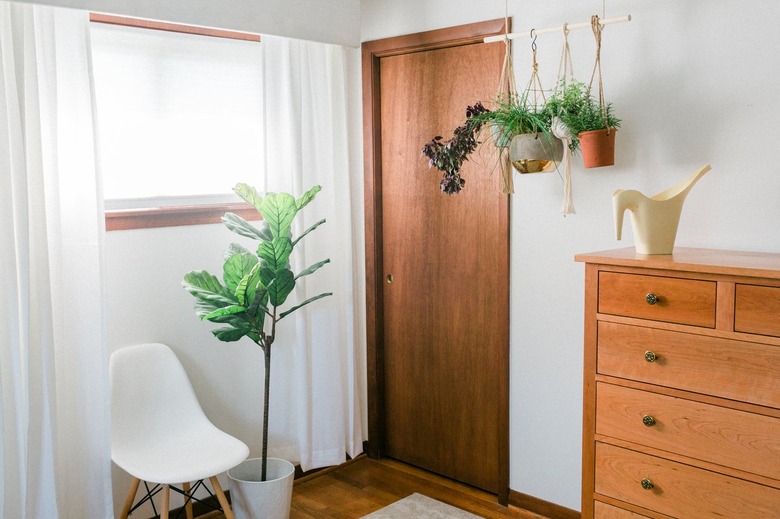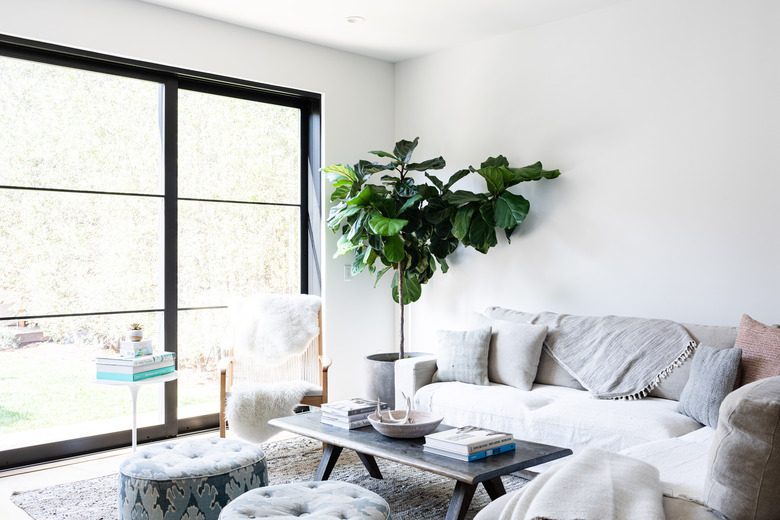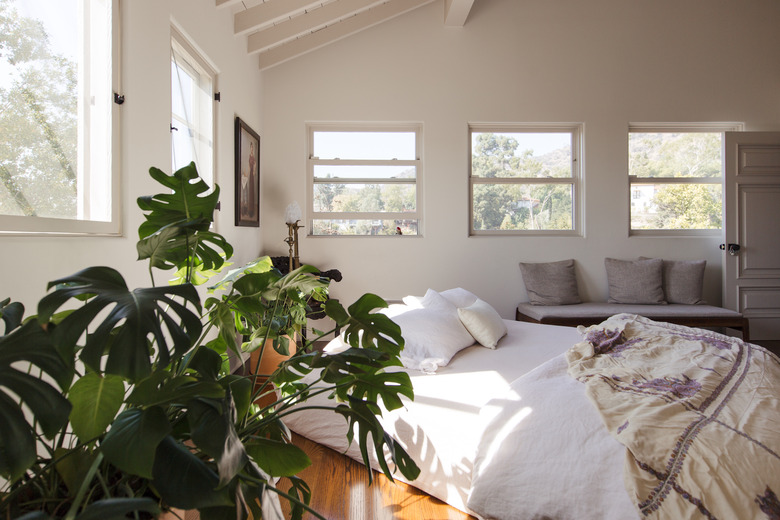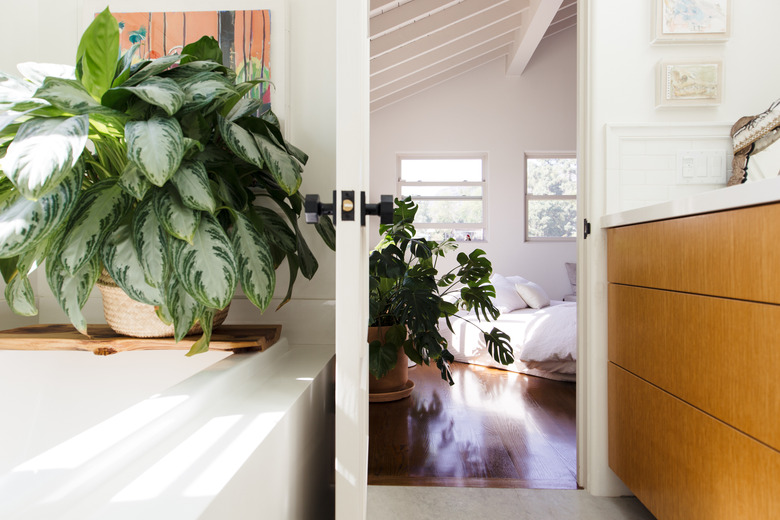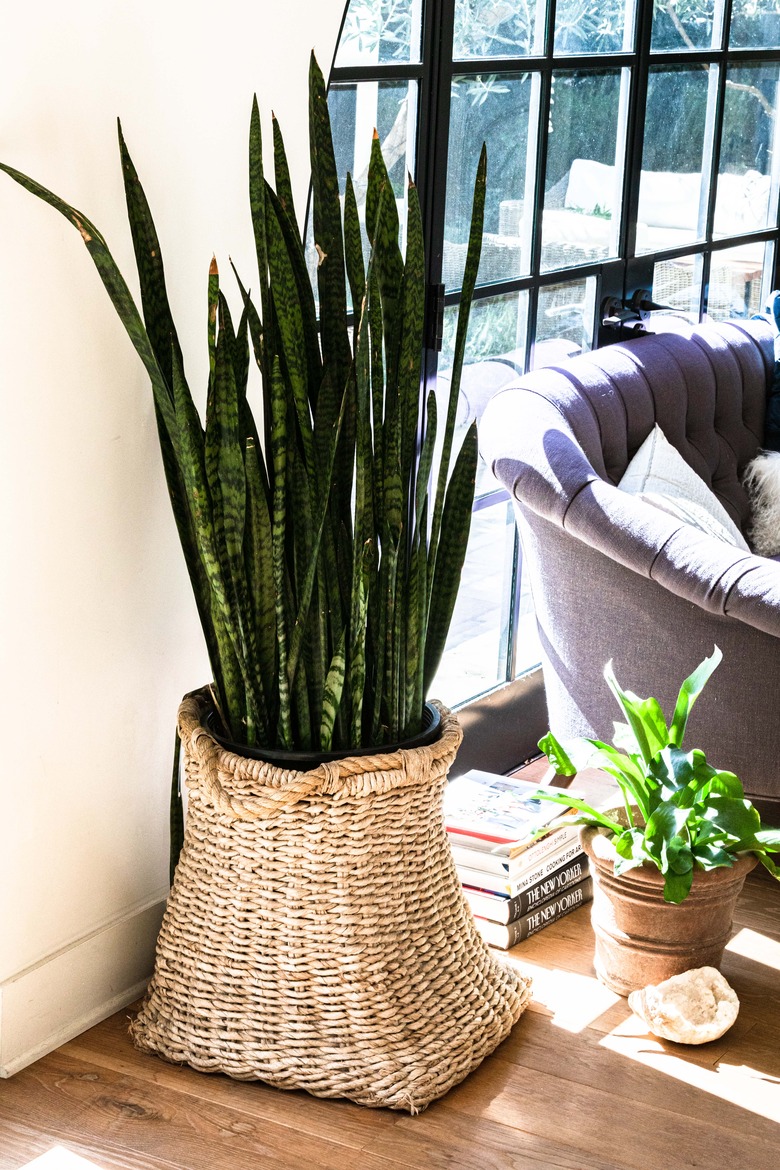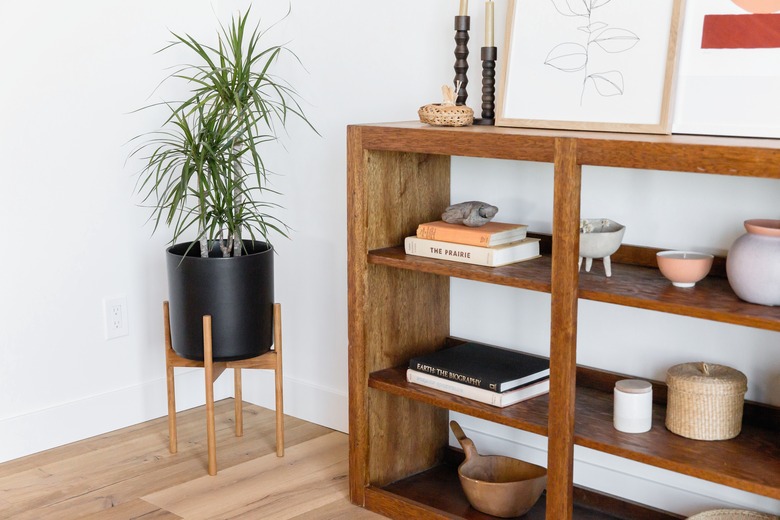Indoor Plant Ideas & Inspiration
Indoor plants play many roles in our lives. They can serve as delightful leafy decor (just to please us or to impress guests), act as healthy air-cleaners, and even sub in for a friendly ear when your bestie is busy. In short, when it comes to more houseplants, the answer has got to be "yes" for novices and life-long plant lovers alike.
So collecting houseplants is a no-brainer, but you'll have more fun and act with more confidence if you also stock up on indoor plant ideas. You'll want tips and information about how to shop for plants, suggestions about which ones work well in each room, and an outline of how to care for them. It would also help to get a primer on using planters and accessories to make the display even more appealing. To make life easier for you, we've combined all that information into one, hefty grab-bag article.
Shopping for Plants
If you've ever played around with online dating apps, you know that what you see is often very different from what you get. When you are shopping for plants, it's exactly the same: That pretty green-leafed plant on the website might not be quite as lush and lovely as the internet image when the package arrives at your door.
So your first stop to shop for plants should be your local garden store, where you can pick the healthiest plant on the shelf with the most buds or the greenest leaves. Only turn to online sellers if you've got your heart set on a plant that's not available locally.
But don't pick random plants that appeal to you at the moment because they may not work well for you. Do your homework first by figuring out the type of light exposure your house can offer and how much time and effort you are willing to dedicate to keeping your indoor plants happy.
Indoor Plant Care
No two plants look exactly alike, and their care requirements are also different. To survive and thrive, a houseplant requires growing conditions that line up with its specific needs for sunlight, drainage, irrigation, humidity, temperature, and fertilizer. Often the plant arrives with a label identifying its preferences. You ignore these at your peril. But it's better to identify the specs of your space first, then select houseplants that match these requirements. And keep your lifestyle in mind. For example, if you travel frequently, you'll need plants that can live for a long time without care.
Some generalizations can be helpful when you are just getting started:
- Most green, leafy houseplants like well-draining potting soil and indirect sunlight and will be happy in the normal range of indoor temperatures.
- A whole range of plants prefer low-light situations, so if you have rooms without much light, pick one of these. Other houseplants love direct sun, and these work well for full-sun windowsills or patios.
- Succulent houseplants like a Christmas cactus or a jade plant won't survive without tip-top drainage, so these require a grittier soil and lots of drain holes in the pots.
- Air plants, like orchids, are epiphytes. They grow in trees in the wild, not in soil. You'll have to use a light-growing material specially designed for them.
- Plants that prefer high humidity often grow well in the bathroom, but you can also up the humidity of any plant by sitting it on pebble saucers.
Before you get too anxious, remember that there really are only a few things a human can do to kill a plant, with overwatering (usually combined with faulty drainage) making the top of the list. Read this article for a short-list of potentially lethal plant-care no-nos to avoid at all costs.
Best Plants by Room
Does it seem odd to you that a plant might prefer the bedroom over the kitchen? The office over the bathroom? It's not as silly as it sounds. Picking the best plants for particular rooms is part of the campaign to fit a plant's needs with the characteristics of a space.
Bathrooms, with episodic humidity, and kitchens, with temperature variations as the oven heats, require special attention. For other rooms of the house, you can go with air-cleaning plants that pull toxins right from the air. And picking the right bedroom plant can help you get to sleep.
Plants for the Bath: Ideal plants for your bathroom are those that love humidity and — since you aren't in the shower forever — can accept alternating humid and dry air. The choice also depends on the size of the room and the amount of light it gets.
If you have a big bathroom with lots of light, you can't go wrong with the sexy plant of the moment, the fiddle-leaf fig tree (Ficus lyrata), with huge, fiddle-shaped leaves that love humidity. Smaller, darker bathroom? Consider the very popular Chinese evergreen (Aglaonema spp.), with its large, lovely leaves and easy-care ways. Want to sit that plant inside the shower? Use moth orchids (Phalaenopsis spp.), beautiful rainforest epiphytes with long-lasting blooms.
Plants for the Kitchen: If they can't stand the heat, they aren't good for the kitchen. Since the kitchen is home to the oven, burners, and all that cooking, it's not for every plant. But some plants will thrive in this sometimes-hot atmosphere.
One tough and resilient plant has the name and the character for the kitchen: the cast iron plant (Aspidistra elatior). Leafy green and lovely, it rides the waves of extreme heat and humidity like a champion surfer and asks for little in return. It's one of the easiest maintenance plants around.
For a different look but the same low-maintenance requirements, try African spear plants (Sansevieria cylindrica). They are succulents with puffy vertical leaves (like fat, green cigars) and chunky roots that allow them to accept almost any living situation, including temperature swings between 50 and 85 degrees Fahrenheit.
Plants for the Bedroom: Bedrooms are for romance, but also relaxation and sweet, sweet dreams. You'll be in charge of the romance; plants can help with the rest. If you select a lavender houseplant (Lavendula spp.), you get sultry purple flowers, a relaxing fragrance, and a nudge toward sleep. People have used dried lavender for years to help them calm down and drift off to sleep.
A more pragmatic but equally lovely choice? English ivy (Hedra helix), a potted version of the vigorous vine that covers fences and walls in the neighborhood. It's very attractive, but it also attacks and gets rid of airborne mold in the bedroom, the room most likely to get mold in the entire house.
Plants for Other Rooms: We have specific recommendations for houseplants for the living room, dining room, and home office, too. But these usually have more to do with how you've decorated than external conditions.
Let's start with the living room, since that's the social room and often the first to reflect your style. Those who've created a boho-chic room would do well to consider something eccentric. We suggest a cool succulent called string of pearls (Senecio rowleyanus), which earns its common name from its long cascading stems with green, pearl-size beads. For a romantic look, you can't do better than a Delta maidenhair nest fern (Adiantum raddianum) that makes a statement with its many small, fan-shaped fronds. Want another style? Find suggestions in this article.
If your dining room is separate from your living area, or even if it's not, a plant hanging in the window ups the interest. For sunny dining room windows, bring in a bright geranium (Geranium spp.) that will love every ray that comes its way. Less light? Bring in the spider plants (Chlorophytum comosum). Don't worry, these shade-tolerant plants with mounded, grasslike leaves don't attract arachnids, but they look a little like them when baby spidies grow from long, bare cascading stems. Spider plants top the easy-sneezy list and clear toxins from the air to boot.
For home offices, you'll want a houseplant that helps you work and work better, with less stress and more positive energy. Of course, you want something gorgeous as well to make you happy during the workday and fit with your decor. A one-plant-fits-all solution might be the philodendron (Philodendron spp.), with masses of shiny green leaves that can climb a trellis, cascade from a hanging basket, or just stand upright. These are low-maintenance, forgiving plants that sweep the toxins from the air. For other options, look here.
Planters and Accessories
If you care enough to prepare a fine meal, you aren't likely to serve it on chipped or paper plates. Just so, those who cherish and nurture their houseplants want to display them beautifully, with planters and other accessories that add elegance or whimsy to the display.
Fortunately, you won't lack in options for planters these days. You'll find interesting selections in garden stores, but also in easily accessible stores like Walmart. (We're crazy about their cool but classic Triflora hanging planters.) With one eye on your decor, pick something that stands out like rattan, metal, ceramics, or cane. They don't have to cost a fortune to look great.
However, the most important thing to consider with planters is their drainage. Planters that won't let water leave the soil are death traps for roots and must be avoided at all costs. You'll still find a large selection to choose from. For some of our favorites, from bold to minimal, check out this article. And for some of our best Amazon finds, look no further than this one.
Houseplant Help
Even if you are a newbie to houseplants, just trust us: Bring in one, easy-going plant, and you are beginning a whole new phase in your life. Then come back to Hunker often for tips and information about them that you never dreamed of.
Did you know some plants like coffee? That others thrive with a little milk? How about using kitty litter for plant care? Or plant suggestions for coffee tables or entryways that will make you happy to be home? Check out our "best houseplant to buy now" series that helps you add to your collection. You need houseplant help? Hunker's got you covered.
